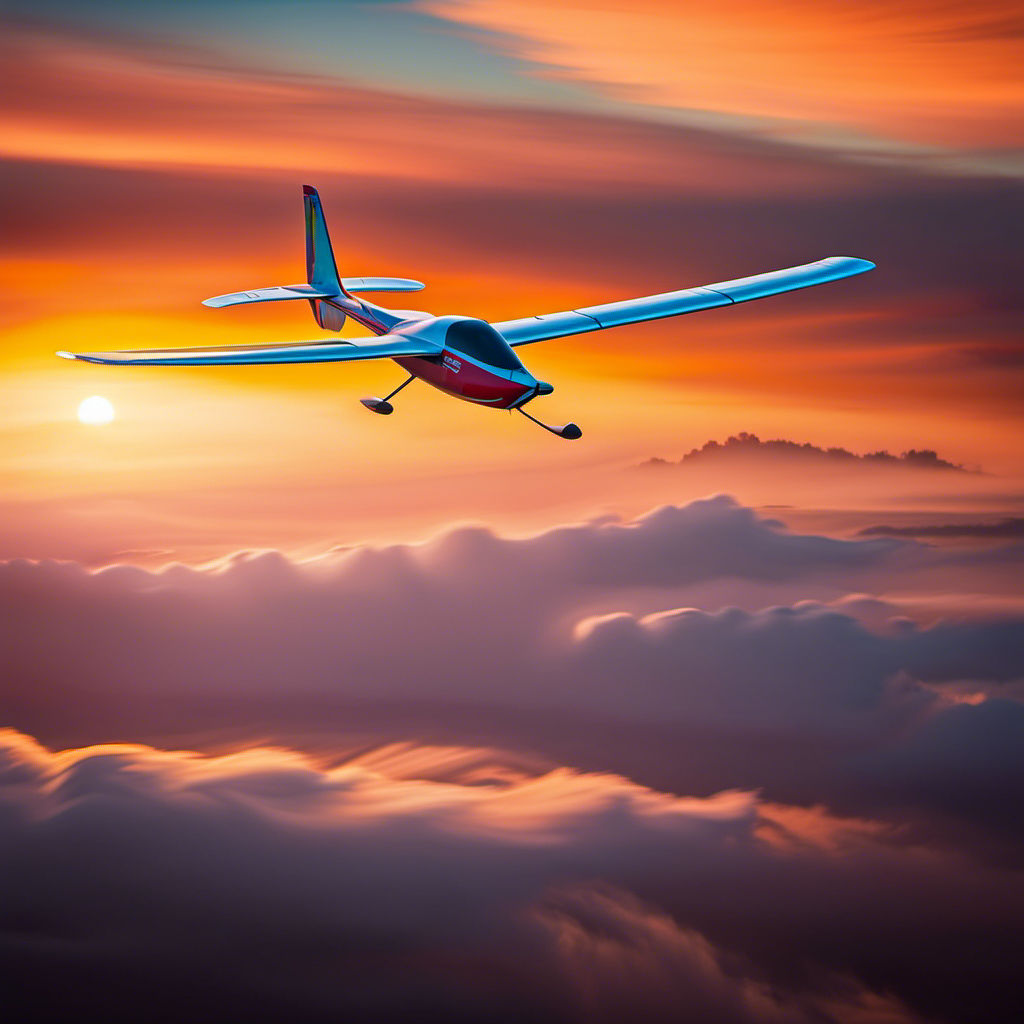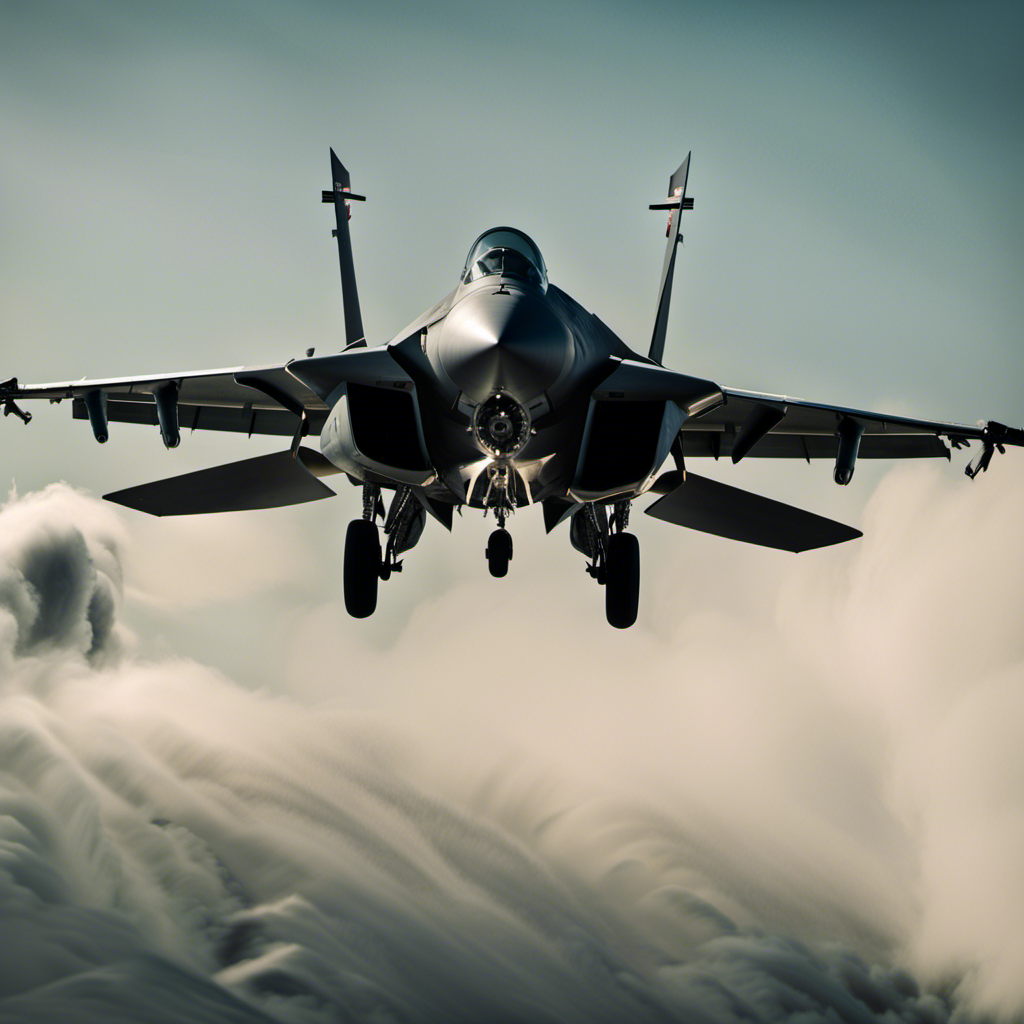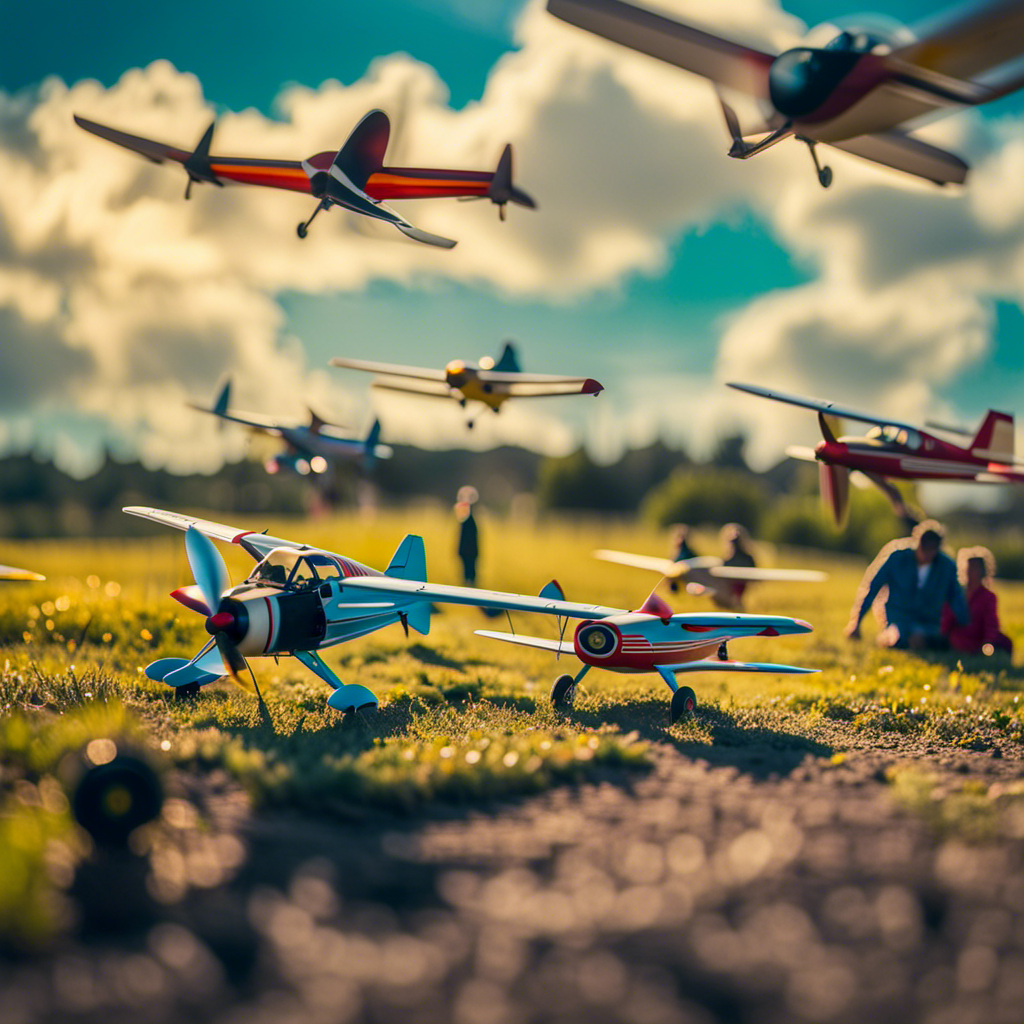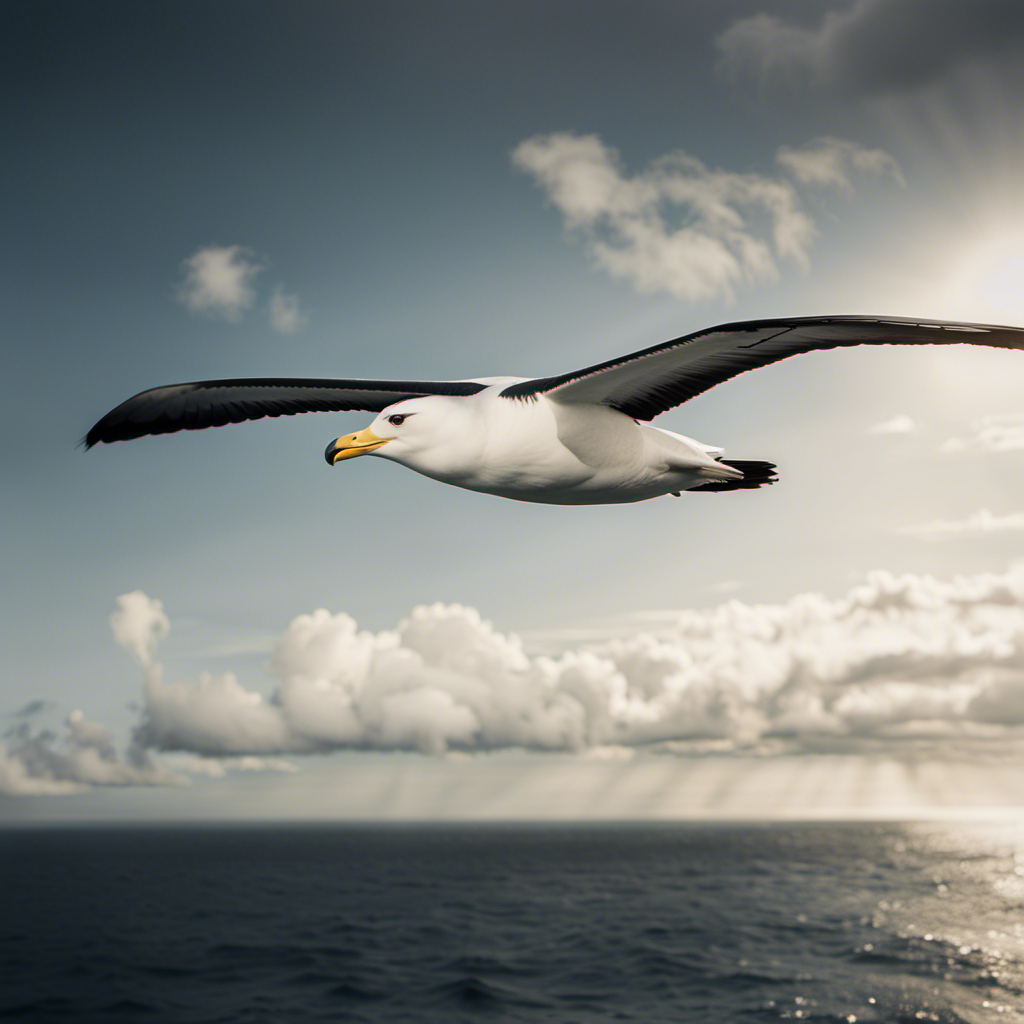When I sit in the pilot’s seat of a glider, I feel a rush of excitement and awe. The sleek, aerodynamic wings, designed to harness the power of the wind, beckon me to take flight into the sky.
In this article, we will explore the question: can a glider go up? Through a technical and analytical lens, we will delve into the intricacies of glider flight, the art of exploiting rising air currents, and the techniques employed by glider pilots.
Join me on this exploration of the fascinating world of gliding.
Key Takeaways
- Gliders rely on rising air currents like thermals and ridge lift to gain altitude.
- Glider pilots circle within thermals to gain altitude and exploit ridge lift by flying close to a ridge or mountain slope.
- Gliders can also experience wave lift by riding wave patterns created by wind and mountains, and exploit convergence zones where two air masses meet.
- Gliders have limitations such as being dependent on weather conditions for sustained flight, limited range without external assistance, limited maneuverability compared to powered aircraft, and vulnerability to turbulence and adverse weather. Skilled pilots are required for optimal flight performance.
Understanding Glider Flight
Understanding how a glider can go up is essential in comprehending glider flight. When flying a glider, we rely on rising air currents to gain altitude.
Two main types of rising air currents that glider pilots exploit are thermals and ridge lift. Thermals are columns of warm air that rise due to temperature differences in the atmosphere. Glider pilots can circle within a thermal to gain altitude.
Ridge lift, on the other hand, occurs when wind blows against a slope or ridge, creating an upward force. By flying close to the ridge, glider pilots can ride this upward force and climb higher.
Exploiting these rising air currents is crucial for a glider to gain altitude and stay aloft without the use of an engine.
Exploiting Rising Air Currents
Taking advantage of rising air currents is key to gaining altitude in a glider. When it comes to exploiting these currents, two main types are commonly used: thermal lift and ridge lift.
Thermal lift occurs when the sun heats the ground, causing the air to rise in columns. As a glider pilot, I carefully search for these thermal columns by observing indicators such as cumulus clouds or dust devils. By circling within these rising columns, I can gain altitude and prolong my flight.
On the other hand, ridge lift occurs when wind encounters a ridge or hill and is forced to rise, creating an upward current. By flying close to the ridge, I can ride this lift and gain altitude without the need for thermals.
Mastering these techniques is essential for a successful glider pilot.
Glider Pilot Techniques
To maximize your altitude in a glider, you’ll want to master the techniques of exploiting rising air currents. Soaring techniques are essential for maximizing lift and staying aloft for extended periods. Here are four key techniques that every glider pilot should master:
-
Thermalling: This involves circling within a thermal, a rising column of warm air. By constantly adjusting the bank angle and speed, you can climb higher and gain altitude.
-
Ridge Lift: Flying close to a ridge or mountain slope allows you to take advantage of the upward airflow created by the wind hitting the obstacle. By flying parallel to the ridge, you can maximize lift.
-
Wave Lift: When wind encounters a mountain range, it can create a wave pattern in the air. By riding these waves, you can experience significant lift and gain altitude.
-
Convergence: This occurs when two air masses meet, creating a line of lift. By flying along the convergence zone, you can exploit the rising air and climb higher.
By mastering these soaring techniques, glider pilots can maximize their altitude and stay airborne for longer periods.
Now, let’s delve into the next section about the equipment and instruments used in gliding.
Equipment and Instruments for Gliding
When you’re preparing for a gliding adventure, it’s crucial to familiarize yourself with the equipment and instruments used in this exhilarating activity. As a glider pilot, I rely on a variety of specialized paragliding equipment to ensure a safe and successful flight.
One of the most important instruments is the variometer, which measures the rate of climb or descent. It allows me to detect thermals and find areas of rising air to gain altitude. Additionally, a GPS navigation system helps me track my position, plan routes, and navigate during cross-country flights.
In terms of safety equipment, a reserve parachute is essential in case of emergencies. Weather forecasting is also vital for glider pilots, as it helps us anticipate conditions such as thermals and wind patterns. By carefully studying the weather forecast, we can make informed decisions about when and where to fly.
Understanding and utilizing these instruments and equipment is key to a successful gliding adventure.
Transitioning into the subsequent section about ‘glider competitions and records,’ it is fascinating to see the incredible achievements that pilots have accomplished in the world of gliding.
Glider Competitions and Records
Competing in glider competitions pushes pilots to achieve incredible feats and set new records. These events not only showcase the skill and expertise of the pilots but also highlight the importance of glider safety and understanding glider aerodynamics.
Safety is paramount in glider competitions, with pilots adhering to strict regulations and guidelines to minimize risks. This includes rigorous pre-flight inspections, adherence to weight limitations, and the use of safety equipment such as parachutes.
Glider aerodynamics play a crucial role in competition performance. Pilots must understand the principles of lift, drag, and weight distribution to optimize their glider’s performance and gain an advantage over their competitors. Knowledge of glider aerodynamics allows pilots to make calculated decisions during races, such as choosing the most efficient flight path or exploiting thermals for additional lift.
Transitioning into the subsequent section about the advantages and limitations of glider flight, it is important to consider the impact of glider competitions on pushing the boundaries of glider technology and performance.
Advantages and Limitations of Glider Flight
Despite their limitations, gliders offer numerous advantages over powered aircraft in terms of environmental impact and cost-effectiveness.
- Gliders do not produce any emissions, making them environmentally friendly.
- Gliders have lower operating costs compared to powered aircraft, as they don’t require fuel or maintenance for an engine.
- Gliders are quieter, reducing noise pollution.
- Gliders have the ability to soar and stay aloft for long periods of time, utilizing natural sources of lift such as thermals and ridge lift.
- Gliders provide a unique and thrilling flying experience, allowing pilots to connect with the elements and experience the sensation of pure flight.
However, gliders also have their limitations.
- Gliders are dependent on weather conditions and require suitable thermal or ridge lift to sustain flight.
- Gliders have limited range and can’t travel long distances without external assistance.
- Gliders have limited maneuverability compared to powered aircraft, making them less suitable for certain types of missions.
- Gliders are more vulnerable to turbulence and adverse weather conditions.
- Gliders require skilled pilots who are experienced in reading the environment and making strategic decisions to maximize their flight performance.
Frequently Asked Questions
How long can a glider stay in the air without any external assistance?
The glider endurance is determined by various factors such as weather conditions, glider design, and pilot skill. It can stay in the air for several hours, reaching altitudes up to several thousand feet.
What is the maximum altitude a glider can reach?
At maximum altitude, a glider can reach heights of up to 50,000 feet. This is achieved through efficient use of thermals and ridge lift, allowing for extended glider flight durations.
Can a glider fly at night?
Yes, a glider can fly at night using instruments for navigation. Night flying requires additional training and precautions due to limited visibility. Glider pilots rely on instruments and navigational aids to maintain safe flight during nighttime operations.
How fast can a glider go?
A glider can achieve speeds of up to 170 miles per hour, depending on its design and atmospheric conditions. The speed is influenced by factors such as glider aerodynamics, air density, and the presence of wind currents.
What are the risks and safety measures associated with glider flight?
In glider flight, risks and safety measures include emergency procedures and monitoring weather conditions. These factors are critical for ensuring the safety of the pilot and passengers during the flight.
Conclusion
In conclusion, the world of glider flight is a captivating realm where pilots harness the forces of nature to soar through the skies. Armed with expert techniques and specialized equipment, glider pilots navigate the invisible currents of rising air, like skilled dancers on an ethereal stage.
Gilding competitions push the boundaries of human skill and endurance, while records are shattered as gliders reach new heights. However, it’s important to acknowledge that glider flight also comes with its limitations, reminding us that even in the skies, nature’s laws reign supreme.
Orion, better known as “Jetstream,” is the voice that brings the stories of the skies to life. His fascination with aviation began at a young age, sparked by his father’s tales of flying and adventure. Orion’s journey into the world of gliding was serendipitous, and from the moment he took his first glider flight, he knew he had found his calling.










